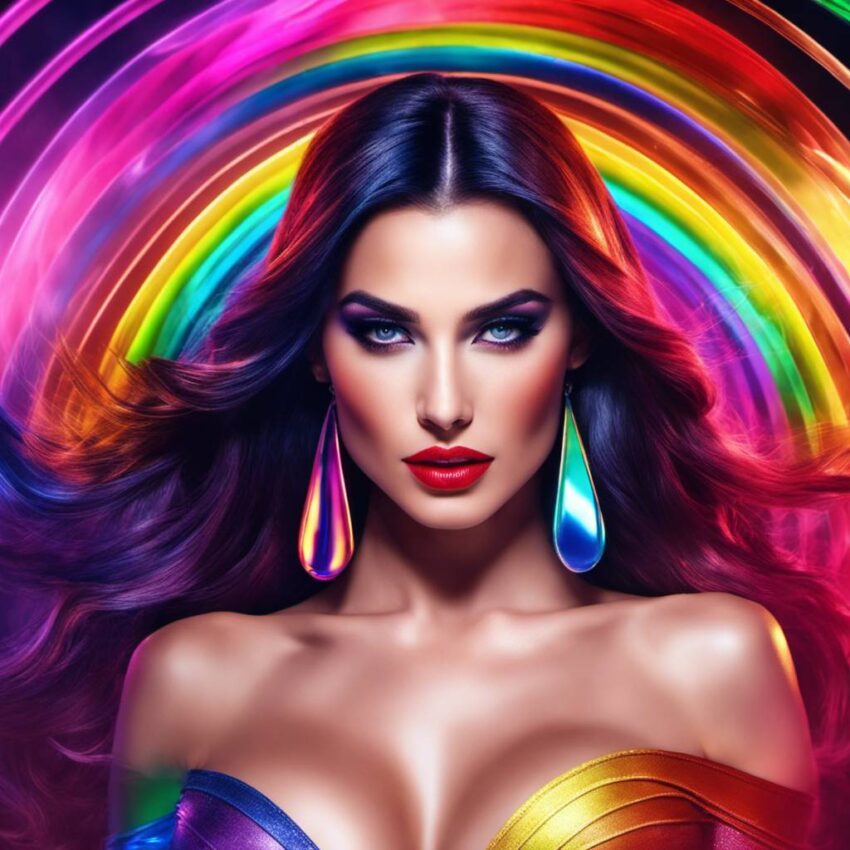Warning: This article contains spoilers.
It’s no secret that queer characters are often subjected to tragic and horrific fates in cinema. However, in some instances, sexually fluid women—portrayed as femme fatales, succubi, or psychopaths—are too cunning to meet an early demise. For years, these characters have been portrayed in films that highlight the perceived danger of women who enjoy the company of both genders.
Jasia Ka, an Emmy-winning director, explains that there’s a sinister quality often associated with bisexual characters in films. This, she believes, reflects society’s fear of individuals who don’t conform to traditional sexual norms. Ka’s latest episodic short film, “Bushwitches,” focuses on a queer coven in Brooklyn, New York. She has been a longtime consumer of works featuring sexually fluid women engaging in violent acts.
Ka cites Karyn Kusama’s “Jennifer’s Body” as an influential film during her adolescence. The 2009 horror film stars Megan Fox as Jennifer and Amanda Seyfried as her best friend, Needy. While the film showcases an intense chemistry between Jennifer and Needy, the depiction of female sexuality is far from flattering. Jennifer uses her allure to seduce and kill male students, a plot point that can be difficult for young queer girls to digest without internalizing negative stereotypes.
Other films, such as “Basic Instinct,” have used similar tropes and elicited mixed reactions from queer audiences. In this 1992 classic, Sharon Stone plays a crime novelist who becomes the prime suspect in a murder case that eerily mirrors the plot of her latest book. The film explores the dangerous liaisons between Catherine (Stone) and the detective on her trail, Nick (Michael Douglas), which trigger violent tendencies in multiple women.
Despite their initial reception, both films have undergone feminist and queer reinterpretation over time. However, they continue to remind viewers of the perceived dangers of women who blend feminine allure with sapphic tendencies—a common theme in many thrillers, mysteries, and horror films.
The portrayal of murderous sapphic characters in early cinema was limited due to Hollywood’s Hays Code and foreign film censorship. Despite these restrictions, a few films managed to break through. One such film is Henri-Georges Clouzot’s 1955 film “Les Diaboliques,” which centers on the wife and mistress of an abusive schoolmaster who conspire to murder him. The women’s coded relationship extends beyond convenience, a point that seems to have escaped U.S. censors. The film’s chilling conclusion reinforces heteronormativity, reminding viewers that it’s often the sexually fluid femme fatale who poses the greatest threat.
Jennifer Reeder, director of queer-inflected horrors like 2019’s “Knives and Skin,” comments on the trope’s lack of empowerment and authenticity, attributing it to male authorship and the catering to male fantasies. Her latest feature, “Perpetrator,” is a coming-of-age, supernatural horror that explores the complicated agency of sexually fluid women.
Films often use the murderous sapphic trope to communicate the lack of agency that Reeder refers to. In some instances, it’s the actions of these women towards strangers that paint them as monstrous. Wes Craven’s 1972 film, “The Last House on the Left,” depicts a psychopathic group who abduct and murder two teenage girls after expressing a desire for female company.
While Craven’s debut feature sparked controversy upon release, many films from that era and since have portrayed violent women in a similar light. From the late 1960s, the cozy murder mystery genre began incorporating more diverse characters, including amateur sleuths and female detectives. However, the portrayal of sexually fluid women as dangerous has remained a constant, even in contemporary murder thriller books for sale.
The portrayal of sexually fluid women in cinema and literature is a complex issue that warrants further exploration. As audiences and readers of female detective titles and cozy mystery books, we must critically examine these stereotypes and push for more authentic and empowering representations.


